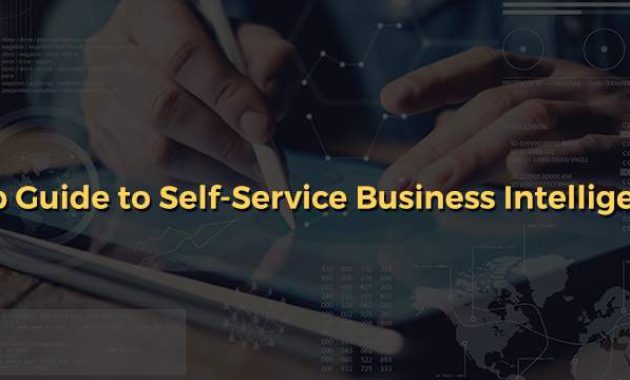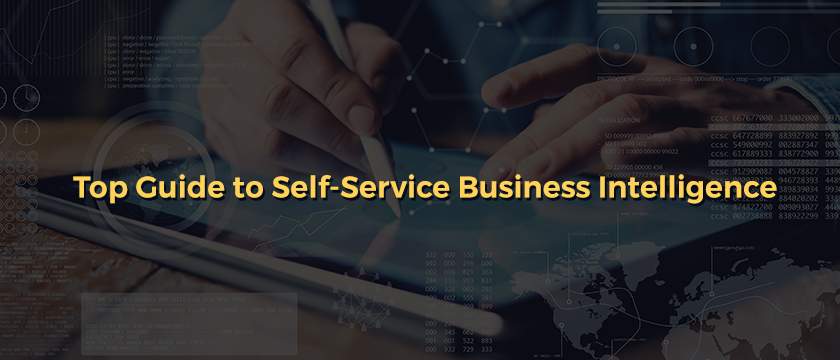
Self-Service Business Intelligence Software: Fueling a Data-Driven Revolution
The modern business landscape is awash in data. Businesses of all sizes are generating unprecedented volumes of information. However, raw data alone is useless. It’s the ability to analyze and interpret this data that unlocks its true potential. This is where self-service business intelligence (BI) software steps in. It empowers individuals, not just IT specialists, to explore data and extract valuable insights. This democratization of data is crucial for fostering a data-driven culture. A culture where decisions are based on facts, not just intuition.
This article delves into the world of self-service business intelligence software. We’ll explore its benefits, features, and how it can transform your organization. We will also examine how it fosters a culture of data literacy and informed decision-making. Understanding the power of self-service BI software is no longer a luxury, it’s a necessity for success.
The Evolution of Business Intelligence
Traditional business intelligence relied heavily on IT departments. Data analysis was a complex, time-consuming process. It often required specialized skills and custom reports. This created bottlenecks, hindering timely decision-making. The advent of self-service BI software changed everything. It shifted the focus from IT-centric analysis to user-driven exploration.
This shift was driven by several factors. First, the increasing volume and complexity of data. Second, the need for faster insights to remain competitive. Third, the growing user-friendliness of the software itself. Modern self-service BI software provides intuitive interfaces. These interfaces allow users to connect to data sources, create visualizations, and generate reports. All this without requiring extensive technical expertise.
Key Features of Self-Service BI Software
Self-service business intelligence software offers a range of features. These features enable users to analyze data effectively. Some of the most important features include:
- Data Connectivity: The ability to connect to various data sources. This includes databases, spreadsheets, cloud services, and more.
- Data Preparation: Tools for cleaning, transforming, and shaping data. This ensures data accuracy and consistency.
- Data Visualization: A wide array of visualization options. These include charts, graphs, maps, and dashboards.
- Interactive Dashboards: Customizable dashboards that provide real-time insights. Users can drill down into data for further analysis.
- Reporting and Analytics: Capabilities for creating and sharing reports. This includes ad-hoc analysis and pre-built templates.
- Collaboration and Sharing: Features that enable users to collaborate on analyses. They can also share insights with colleagues.
- Mobile Access: Accessibility from mobile devices. This allows users to access data and insights anytime, anywhere.
These features empower users to explore data independently. They can identify trends, patterns, and outliers. This leads to better decision-making and improved business outcomes.
Benefits of Implementing Self-Service BI Software
Implementing self-service business intelligence software offers numerous benefits to organizations. These benefits contribute to a more data-driven culture:
- Improved Decision-Making: Data-driven insights lead to more informed decisions. This reduces reliance on gut feelings and guesswork.
- Increased Efficiency: Automation of reporting and analysis frees up IT resources. This allows them to focus on more strategic initiatives.
- Enhanced Collaboration: Shared dashboards and reports facilitate collaboration. This also fosters a culture of data sharing and transparency.
- Faster Time to Insights: Users can quickly analyze data and identify opportunities. This allows for quicker responses to market changes.
- Reduced Costs: Self-service BI reduces the need for expensive custom reports. It also lowers reliance on external consultants.
- Empowered Employees: Employees gain data literacy. They can make more informed decisions in their roles.
These benefits collectively contribute to a more agile and competitive organization. It drives the shift towards a data-driven culture.
How Self-Service BI Drives a Data-Driven Culture
A data-driven culture is one where data informs all aspects of business operations. Self-service business intelligence software is essential in cultivating this culture. It does this through several mechanisms:
- Democratization of Data: By making data accessible to everyone, self-service BI software breaks down data silos. It levels the playing field.
- Data Literacy: The software encourages users to explore and understand data. This improves data literacy across the organization.
- Data-Driven Conversations: Dashboards and reports become the basis for discussions. These discussions center on facts, not opinions.
- Data-Informed Strategies: Strategic decisions are grounded in data analysis. This ensures alignment with business goals.
- Continuous Improvement: Data insights drive a cycle of continuous improvement. This leads to better outcomes over time.
When properly implemented, self-service BI software acts as a catalyst. It transforms an organization’s approach to data. It moves from reactive analysis to proactive insight. This creates a culture of data-driven innovation.
Choosing the Right Self-Service BI Software
Selecting the right self-service business intelligence software is crucial. The best choice depends on your specific needs and requirements. Consider the following factors when making your decision:
- Ease of Use: The software should have an intuitive interface. Users should be able to learn it quickly.
- Data Connectivity: Ensure it supports the data sources you need. This includes databases, cloud services, and more.
- Features: Look for features like data preparation, visualization, and reporting. These are crucial for effective analysis.
- Scalability: The software should be able to handle increasing data volumes. This is important as your business grows.
- Security: Data security is paramount. Choose software with robust security features.
- Integration: The software should integrate with your existing systems. This ensures seamless data flow.
- Cost: Consider the total cost of ownership. This includes software licensing, implementation, and training.
- Support: Choose a vendor that offers excellent customer support. This is essential for troubleshooting and assistance.
By carefully evaluating these factors, you can select the right self-service BI software. This will ensure it meets your current and future needs.
Real-World Examples: Self-Service BI in Action
Numerous companies have successfully implemented self-service business intelligence software. They have used it to drive a data-driven culture. Here are a few examples:
- Retail: Retailers use BI to analyze sales data. They optimize inventory, personalize marketing campaigns, and improve customer experience.
- Healthcare: Healthcare providers use BI to analyze patient data. They improve patient outcomes, optimize resource allocation, and reduce costs.
- Manufacturing: Manufacturers use BI to analyze production data. They optimize processes, reduce waste, and improve efficiency.
- Financial Services: Financial institutions use BI to analyze financial data. They make better investment decisions, manage risk, and detect fraud.
These examples demonstrate the versatility of self-service BI software. It can be applied across various industries to achieve significant business results.
Challenges and Considerations
While self-service business intelligence software offers significant benefits, there are challenges. Awareness of these challenges can help you mitigate them:
- Data Governance: Establish clear data governance policies. This ensures data accuracy, consistency, and security.
- Training and Support: Provide adequate training and support to users. This helps them use the software effectively.
- Data Quality: Invest in data quality initiatives. This ensures the reliability of your data analysis.
- Change Management: Manage the change effectively. This helps users adopt the new approach.
- Data Literacy Gap: Address any data literacy gaps. Provide training and resources to improve data skills.
Addressing these challenges is crucial for successful implementation. It also helps realize the full potential of self-service BI software.
The Future of Self-Service BI
The future of self-service business intelligence software is bright. Several trends are shaping its evolution:
- Artificial Intelligence (AI) and Machine Learning (ML): AI and ML will automate data analysis. This provides even deeper insights.
- Cloud-Based BI: Cloud-based BI solutions will become more prevalent. This offers greater flexibility and scalability.
- Embedded Analytics: BI capabilities will be embedded into other applications. This makes data more accessible.
- Augmented Analytics: Augmented analytics will automate insights generation. This will assist users in their analysis.
These trends will continue to drive innovation. They will make self-service BI software even more powerful and user-friendly.
Conclusion: Embracing the Data-Driven Future
Self-service business intelligence software is transforming the business landscape. It empowers organizations to embrace a data-driven culture. By providing access to data and powerful analytical tools, it enables better decision-making. It also fosters innovation and improved business outcomes. Implementing the right self-service BI software is a strategic imperative. It’s vital for any organization aiming to thrive in today’s data-rich world. The democratization of data is here. It’s time to harness its power. Embrace the future with self-service BI software. The opportunities are endless. Start today to cultivate a data-driven culture. [See also: Related Article Titles]

